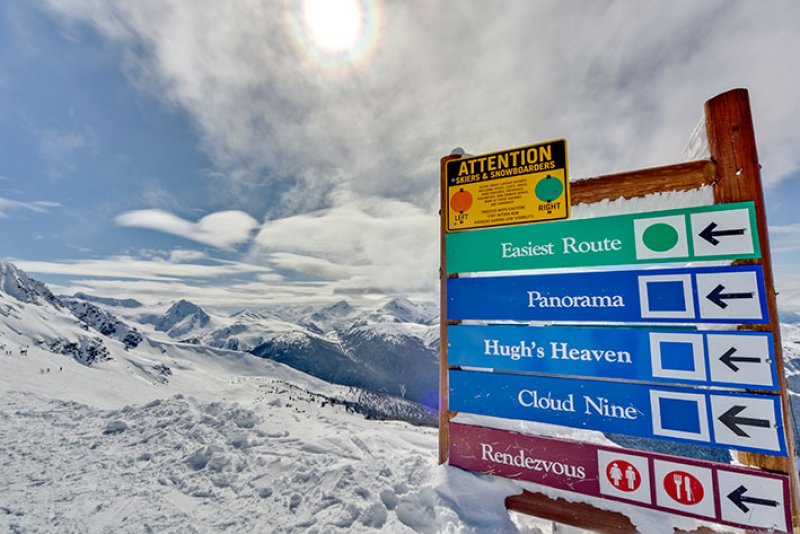Whistler Blackcomb's Ski Zones for Beginners, Intermediates and Experts
By Steve Fisher / Images by Joern Rohde
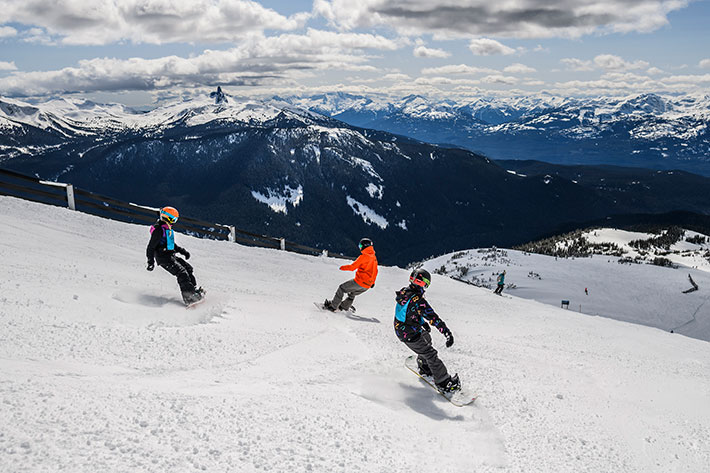
For first-time visitors, it’s easy to look up at the peaks of Whistler and Blackcomb mountains and perhaps feel a bit intimidated. Looking around from the lifts, you’ll notice ski tracks going everywhere — between rocks, through the trees, and even off cliffs! But before you start thinking you’ve entered a training ground for elite-level skiers and snowboarders, rest assured that Whistler Blackcomb’s expansive trail map includes a vast selection of green dot (easy), blue square (intermediate) and black diamond (expert) terrain.
Since Whistler Blackcomb is so big, we would like to save you some time and trouble with this shortcut guide to the best ski areas on each mountain for different skill levels. Whistler Blackcomb’s Leslie Glaysher, a ski instructor for 33 years and head coach of The Camp, offers her suggestions and provides some important tips about getting around the mountains safely.
Beginners:
Whistler Blackcomb welcomes first-time skiers and snowboarders. If you’ve never been on snow before, there are multiple learning areas and plenty of gentle slopes that allow anyone to progress from “Is my boot clicked in?” to “Let’s try a faster run!” Located at the bottom of the mountain, Blackcomb’s Magic Chair offers the easiest-to-access terrain for beginners. The slope beneath the Magic Chair serves as the resort’s “bunny hill,” and a “learn to ski” area at the base features a beginner-friendly magic-carpet lift.
On Whistler Mountain, Glaysher recommends first-timers go to Olympic Station, a dedicated learning area conveniently located at the Whistler Village Gondola’s mid-station.
“They have a series of terrain features that were built-in, so you can, on very gentle terrain, have little rollers and bermed corners, and those are all teaching aids. They also give you some experience of some of the things you’ll be dealing with when you move out to the bigger part of the mountain,” Glasyher says.
One thing that might surprise some visitors is that Whistler and Blackcomb both have beginner-friendly areas located quite high up on the mountains. The Catskinner Chair on Blackcomb is one example: While the slopes surrounding that lift are easy to ride, basic skills like turning, stopping and maintaining control are required to get in and out of the area.
“Beginners can’t just go right to the top of the mountain without a lesson and hope to point themselves downwards,” cautions Glaysher. “There’s a big difference between beginner in the beginner zones and being able to ski at the top of the mountain on green runs.”
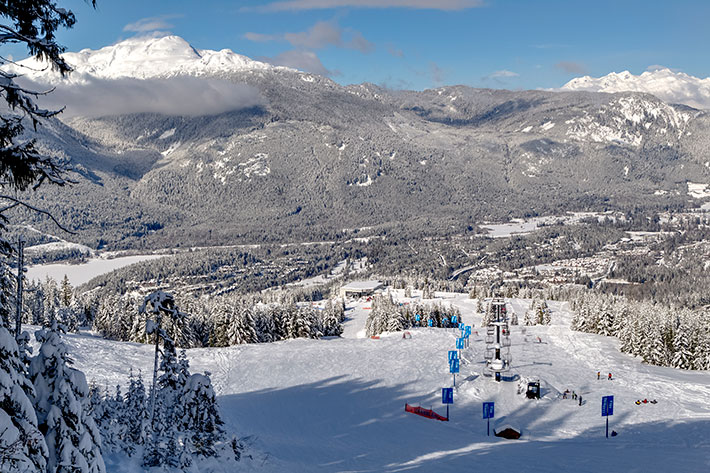
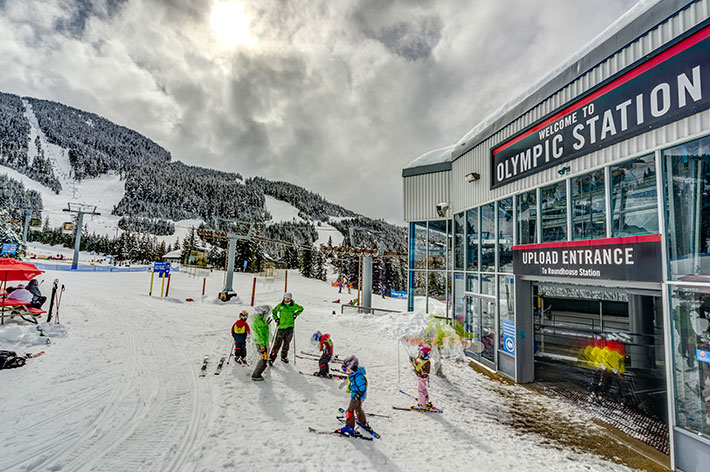
Intermediate:
For skiers and riders who have the basic techniques mastered but are still building their skill sets, here are some ideal intermediate zones to explore. When visibility is good, Glaysher recommends Whistler Mountain’s Harmony and Symphony chairs for intermediate terrain with incredible views all around.
Whistler’s other key intermediate area, which offers great riding in all weather conditions, is the Emerald Zone. This area offers mellow slopes located near the Roundhouse Lodge, so it’s easy to take a break and warm up, grab lunch or find a washroom.
“The Emerald Zone is truly the best intermediate area,” Glaysher says. “There is a family zone on the Emerald Chair that is meant to be for people working on improving their skiing.”
On Blackcomb, Glaysher suggests two areas for intermediate skiers or snowboarders: “Crystal Ridge, with the new Crystal Chair, is fabulous for intermediate skiers and has long runs — so make sure you look for a groomed run; it’s super fun. And Seventh Heaven, of course, is beautiful as well,” Glaysher says.
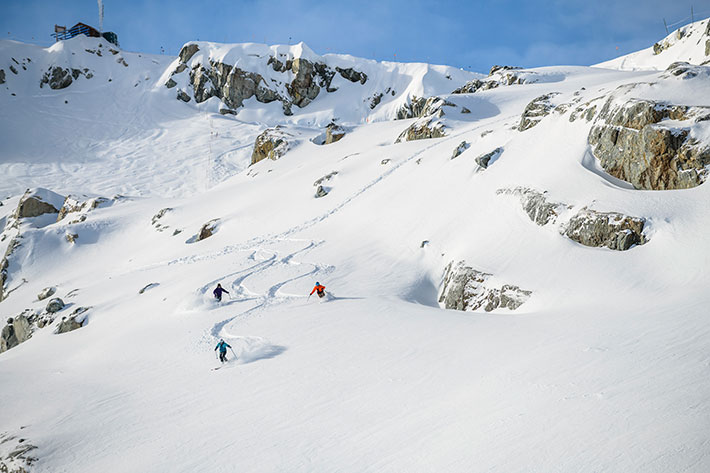
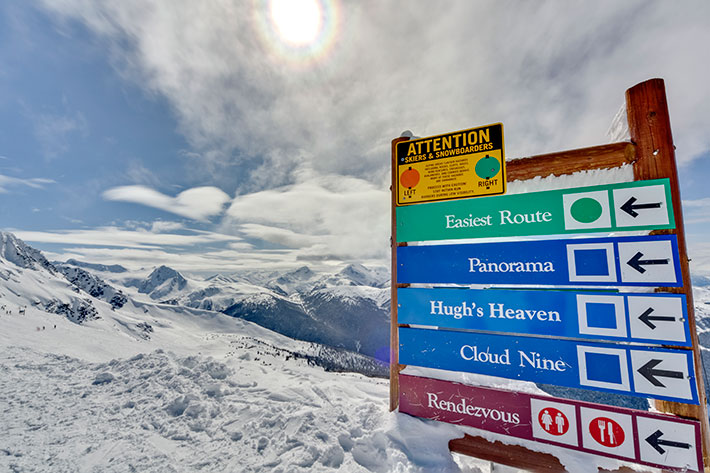
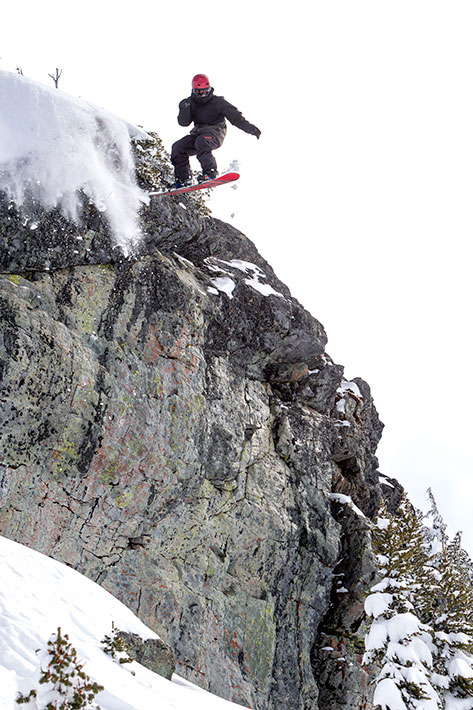
Expert:
As Glaysher discussed her picks for the best expert-level riding zones, she wisely pointed out that in these areas, weather and snow conditions become major factors to consider, regardless of how well you can ski or ride. “You have to choose your day, so you have visibility and cooperative snow. Glacier Express gets you above the treeline; but if you get up there and it’s foggy, and there are no trees to give you depth perception, it’s really easy to find yourself on top of something you don’t want to be on because you can’t see anything,” Glaysher says.
In these expert-level areas, skiers and riders need to be comfortable with evaluating snow and weather conditions as they tackle challenging, natural terrain features.
“There can be difficult entrances [or] large bumps (moguls). There can be every type of snow condition and visibility. A beautiful day where you can see everything is completely different than a fully fogged-out day with cruddy, wind-crusted snow,” explains Glaysher.
With those caveats in mind, here’s where expert-level skiers and riders can find some thrilling terrain to pump up their adrenalin. On Whistler, “The front side of the peak has maximum vertical, with a short lift ride and just no end of steep, amazing skiing,” Glaysher says. On Blackcomb, “The Couloir is always fabulous, and the Glacier Express gives you a lot of bang for your buck. You can get a lot of vertical, and once again, a fast turnaround time.”
Whether you are here to strap on skis or a snowboard for the first time, or you’re looking to push your steep skiing in the alpine, Whistler Blackcomb has lots of terrain that anyone can enjoy. It can take years to master Whistler Blackcomb’s massive trail map, but thanks to Glaysher’s intimate knowledge of the slopes, you can beeline it directly to the type of terrain that best suits your ability level. whistlerblackcomb.com

